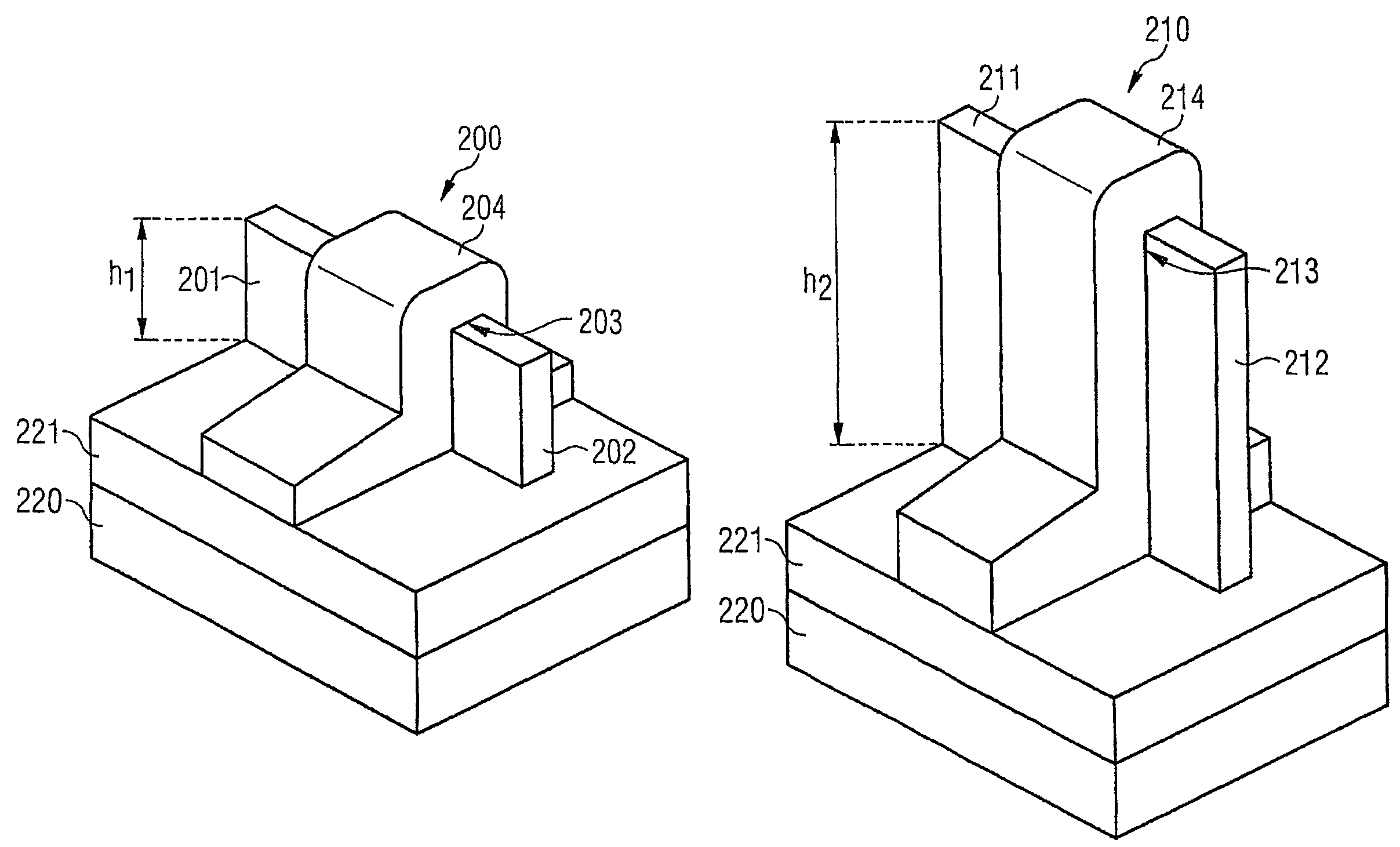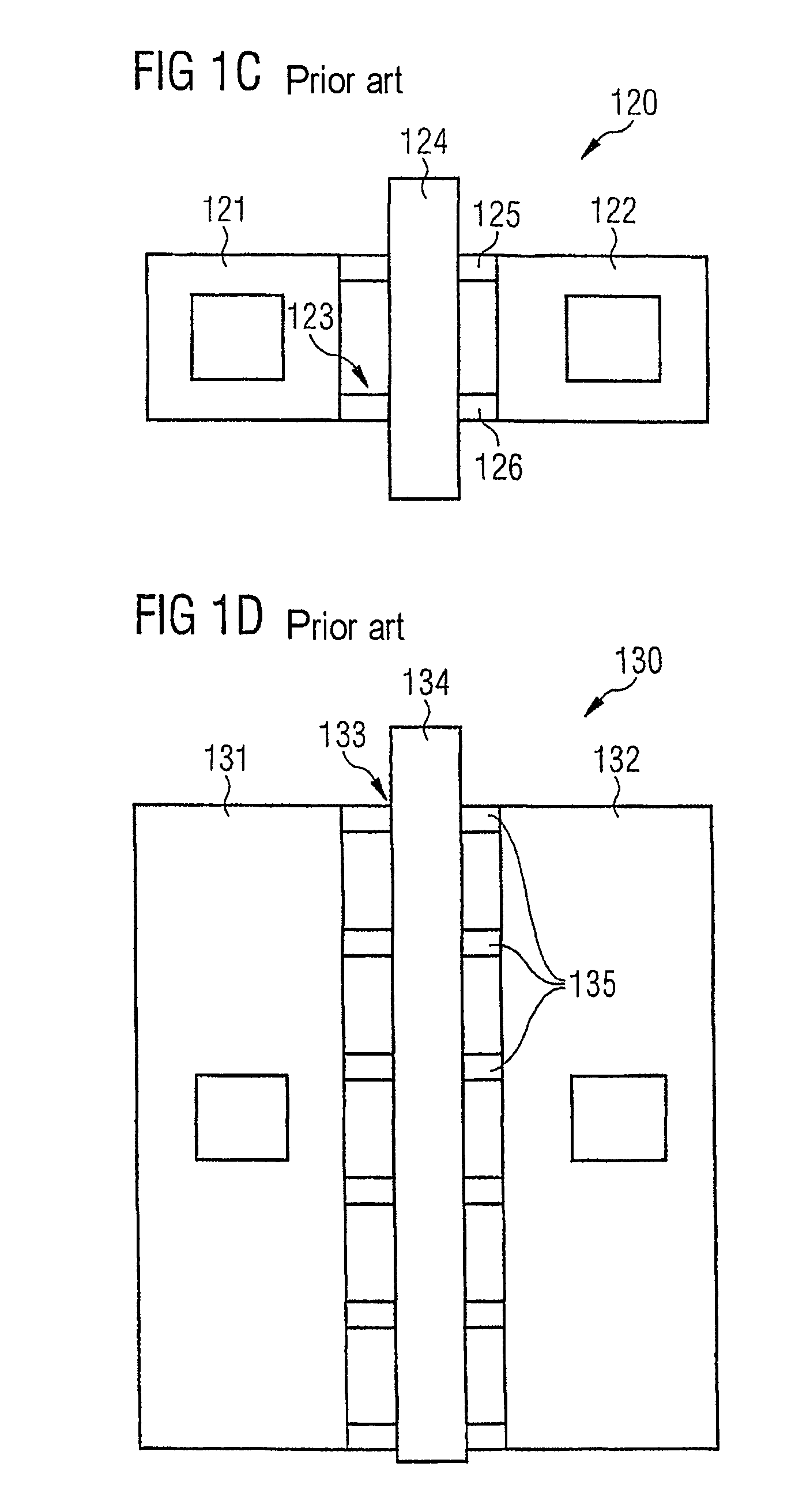Fin field effect transistor arrangement and method for producing a fin field effect transistor arrangement
a technology of fin field effect transistor and arrangement, which is applied in the direction of transistors, electrical devices, semiconductor devices, etc., can solve the problems of large area requirement for realizing the circuit on a silicon chip, cost pressure in semiconductor technology, and loss of valuable silicon area, etc., and achieve good quality and reproducibility. the effect of
- Summary
- Abstract
- Description
- Claims
- Application Information
AI Technical Summary
Benefits of technology
Problems solved by technology
Method used
Image
Examples
Embodiment Construction
[0098]Identical or similar components in different figures are provided with identical reference numerals.
[0099]The illustrations in the figures are schematic and not to scale.
[0100]A description is given below, referring to FIG. 2A, FIG. 2B, of an n-MOS fin field effect transistor 200 and a p-MOS fin field effect transistor 210, which are integrated in a fin field effect transistor arrangement according to the invention and in a common substrate.
[0101]The fin field effect transistor arrangement from FIG. 2A, FIG. 2B, which contains the n-MOS fin field effect transistor 200 and the p-MOS fin field effect transistor 210, has a silicon substrate 220, on which a silicon oxide layer 221 is formed. Although transistors 200, 210 are illustrated separately in FIG. 2A, FIG. 2B, both fin field effect transistors 200, 210 are monolithically integrated in the same substrate 220.
[0102]The n-MOS fin field effect transistor 200 contains a silicon fin having the height h1. A first source / drain reg...
PUM
 Login to View More
Login to View More Abstract
Description
Claims
Application Information
 Login to View More
Login to View More - R&D
- Intellectual Property
- Life Sciences
- Materials
- Tech Scout
- Unparalleled Data Quality
- Higher Quality Content
- 60% Fewer Hallucinations
Browse by: Latest US Patents, China's latest patents, Technical Efficacy Thesaurus, Application Domain, Technology Topic, Popular Technical Reports.
© 2025 PatSnap. All rights reserved.Legal|Privacy policy|Modern Slavery Act Transparency Statement|Sitemap|About US| Contact US: help@patsnap.com



